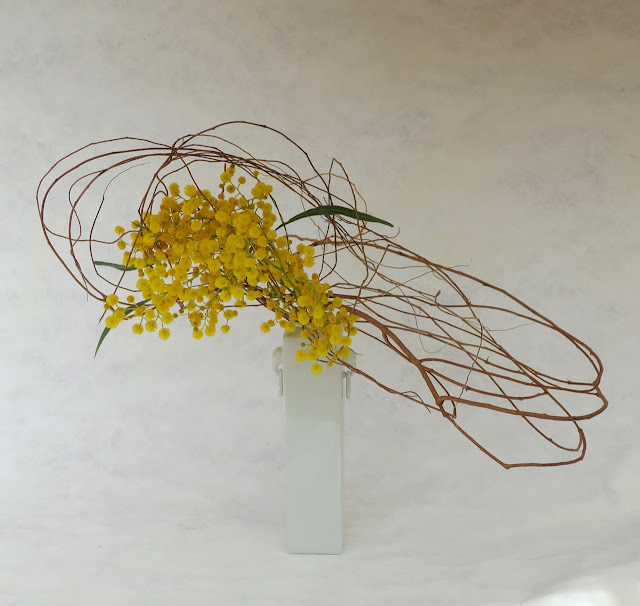This week I am focusing on some indigenous Australian plants. The flowers of these plants often have forms that are quite different from those seen in traditional ikebana arrangements. Usually, they have a quite strong structural appearance which works well in ikebana. My thinking is that this is because ikebana really starts with the element of line, and it is line that enables the ikebanist to create space. This is then extended by the other principal elements of mass and colour.
The first of the indigenous plants that I want to focus on is the Banksia. Recently my friend Heather, an excellent gardener, gave me some flowers from her Banksia 'Giant Candles', which is a hybrid of B. ericifolia and B. spinulosa. The inflorescences of that hybrid are really huge, up to 40 cms tall.
In this close up, which shows part of one of the flower spikes on the bush above, you can see the curiously hooked end of the styles (part of the pistol). For the ikebanist this can be either irritating, because things stick to its 'velcro' like surface, or ...
... on the other hand that characteristic can be used. After I took my ikebana down I attached the second flower on the right hand side to demonstrate this property.
The recent ikebana that I made with Heather's banksias are secured in a kenzan. The rich orange of the flower spikes complements the unique ceramic vessel, while the green of the leaves give a feeling of freshness. The vessel is by Janet Keefe, from Ontario Canada.
While I was in the more jungly part of the front garden last week I noticed that a self-sown Bluebell Creeper Billardiera fusiformis, a Western Australian native, was working its way up into one of the Tea-trees. It has been declared an environmental weed in many places in the eastern states. When I pulled it out I was surprised at the length of its twining branches and recognised potential ikebana material. The question of course is what will go with this vine...
Greetings from Christopher,
10th October 2020.









No comments:
Post a Comment